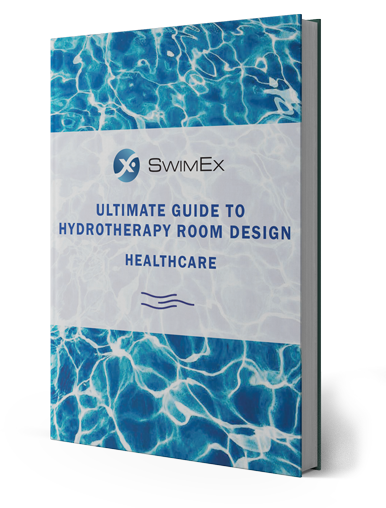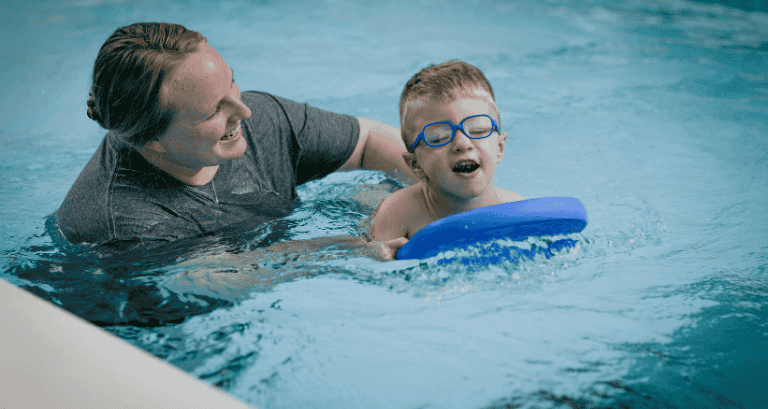
Hydrotherapy is a proven modality for rehabilitation, recovery, and exercise. When used in a healthcare setting, this successful tool positively impacts revenue and treatment outcomes. The simplicity of how it works combined with the many conditions it treats makes it a smart choice for your ROI. Here’s why.
The properties of water – buoyancy, hydrostatic pressure, density – are highly effective for rehabilitation, training, and conditioning. These properties make hydrotherapy in healthcare ideal for improving function, muscle strength, balance, and range of motion.
Top 9 Ways Hydrotherapy in Healthcare Creates Success
Therapy pools for hospitals are a powerful solution for improving patient care and outcomes. With the proven benefits of hydrotherapy for recovery, these rehabilitation pools help enhance mobility, reduce pain, and accelerate healing. Hospitals and healthcare facilities that invest in water therapy see positive patient results, increased efficiency, and greater revenue opportunities. If you’re considering hydrotherapy, here’s how this innovative approach can help you achieve your goals.
- Generates a positive return on investment.
- Creates a high level of patient satisfaction.
- Ability to treat multiple populations with this one modality.
- Competitive advantage: Innovative alternative therapy that may not be offered in neighboring healthcare institutions.
- Allows ability to offer full range of integrated therapies.
- Effective with clients of any ability level and/or disability.
- Exercises can be offered earlier than land-based treatments for more efficient recovery times.
- Safe rehabilitation environment diminishes possibilities of re-injury during rehab.
- Satisfied patients with better outcomes means a large group of clients are a strong referral base.
Why Hydrotherapy for Recovery Works
- Water is a counterbalance to gravity.
- It is great for resistance, as a compressor, and a thermal conductor.
- Water stimulates metabolic and neuromuscular systems.
- Treatments can be introduced in the early stages of rehabilitation.
- It activates musculoskeletal and cardiovascular systems while maintaining a low risk of injury.
- Patients experience greater overall comfort. Subsequently, they are more likely to continue exercising due to minimal joint impact, less pain, and edema.
According to the North American Journal of Medicine, water therapy can be used to improve immunity and for the management of pain, CHF, MI, chronic obstructive pulmonary diseases, asthma, PD, AS, RA, OAK, FMS, anorectal disorders, fatigue, anxiety, obesity, hypercholesterolemia, hyperthermia, labor, etc.
A leading hydrotherapy researcher Dr. Bruce Becker reports there are tremendous potential public health benefits to be achieved through hydrotherapy programs targeted at the most costly chronic diseases: hypertension, cardiovascular disease, arthritis and other musculoskeletal pathology, obesity, and deconditioning. His study on the scientific foundations and clinical rehabilitation applications of aquatic therapy concludes that there are unique attributes to aquatic therapy that seem to both preserve and protect health and longevity.
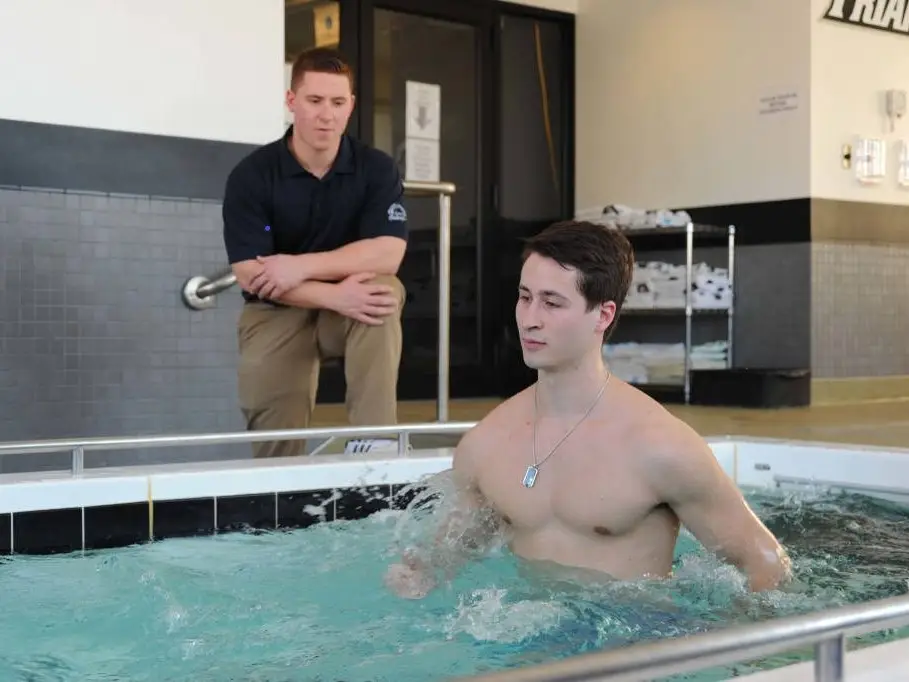
Treating Specific Health Conditions in Rehabilitation Pools
In many cases, weight bearing exercises may not be suitable for individuals with orthopedic or musculoskeletal limitations, obesity, or other medical conditions. Rehabilitation pools are particularly effective when clients are unable to exercise on land.
Hydrotherapy in Healthcare: Cardiac
A significant cause of morbidity and mortality is heart failure. However, exercise is considered an established non-pharmacological treatment for patients to manage and control heart failure.
According to one study on hydrotherapy in heart failure, cardiac function actually improves during water immersion due to the increase in early diastolic filling and decrease in heart rate. As a result there are improvements in stroke volume and ejection fraction. In addition, another study reports exercising in water produces an increase in cardiac output, in the blood flow to muscles, and in the diffusion of metabolic waste products from muscle to blood. There is also a reduction in the time it takes to transport oxygen, nutrients, and hormones to fatigued muscles.
Top benefits of hydrotherapy for cardiac patients
- Increase in lung capacity with fewer issues of exercise-induced asthma.
- Increased circulation with increased cardiac output. This leads to an overall decrease in heart rate, blood pressure, and an increase in cardiac efficiency.
- Hydrostatic pressure of water produces the equivalent of 17 elastic bandages wrapped around the body. Subsequently, the patient’s venous return is greater, so the heart begins working more efficiently which increases blood flow. With that same pressure, the lungs are getting a workout and cardiovascular endurance begins to improve.
Hydrotherapy in Healthcare: Pediatrics
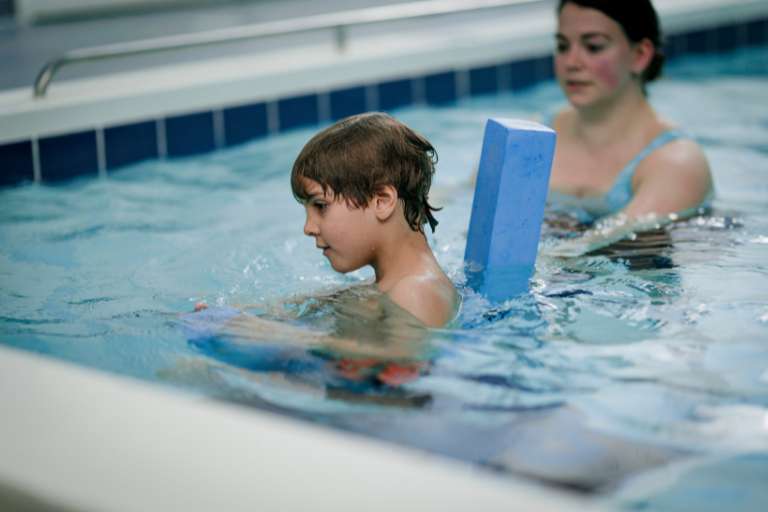
Imagine the fun a small child experiences in a pool with a current. Picture him holding the pool rails. The water sweeps past as he’s in a full stretch with the water flow. He lets go. Giggling, He floats across the pool with the current. As he repeats the process under the guidance of an experienced therapist, he’s having a blast. More importantly, he’s working on her grasp function.
One pediatric aquatic therapy study concludes that hydrotherapy is a novel therapy for children with marked motor impairment because movement in land-based exercises is limited for this population. The study confirms that pediatric aquatic therapy is a safe and effective alternative to land-based therapies, even for children with severe cerebral palsy.
Top benefits of hydrotherapy for pediatric patients
- Uniform support and fluid resistance of the water provides stability and prolonged reaction times for patients with posture or movement dysfunction.
- Near zero gravity effectively reduces the patient’s body weight, making it easier to move.
- Continuous fluid and uniform resistance to develop strength through larger ranges of motion.
- Constant pressure supports body awareness to improve brain-body connection.
- Depending on how a therapist uses aquatic therapy, the multi-sensory environment stimulates alertness or calms a child.
- Most children love water and will see therapy as fun.
Hasbro Children’s Hospital is transforming pediatric rehab with its SwimEx 1000 T rehabilitation pool, making therapy sessions both effective and fun. From building strength with the paddlewheel current to creating a safe, engaging space for young patients, aquatic therapy is delivering incredible results. See how this hospital therapy pool is changing lives.
Hydrotherapy in Healthcare: Bariatrics
Weight-bearing exercise can aggravate pain. In turn this promotes degeneration in patients that have abnormal joints due to obesity. Because of this, bariatric patients often discontinue exercise altogether. Once they stop exercising, they can damage joints even further. This leads to a downward spiral of immobility and degeneration.
Hydrotherapy reduces joint compression. Therefore, it is more likely that the client can perform exercises that would normally be too taxing if done on land. Pool exercises offer this population the perfect combination of work and comfort that builds confidence to continue treatment.
Top benefits of hydrotherapy for bariatric patients
- Warm water relaxes muscles and increases flexibility. Clients move easier with fewer symptoms.
- Increased kidney and renal function from the increased pressure and blood flow.
- Buoyancy reduces gravitational load on legs and spine for more movement with less pain.
- Improves mental outlook both in the water and on land as patients continue with treatment.
- Increases lean muscle mass, burns more calories than land-only treatments for time-efficient workouts.
War veteran John was ready to regain his mobility, but his fear of water made rehab challenging. With the help of therapist Lauren Tavares and a SwimEx Triton therapy pool, he took small steps toward recovery—gaining confidence, strength, and independence. Read his inspiring journey here.
Hydrotherapy in Healthcare: Geriatrics
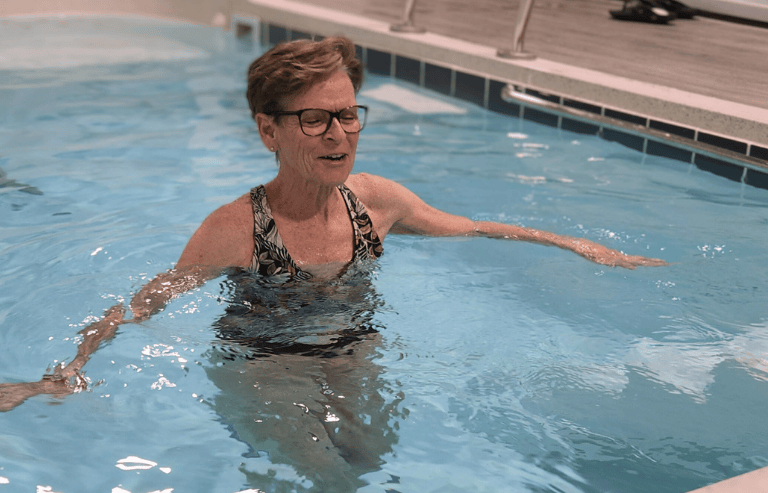
Healthcare systems from around the world face the same issue: rising costs due to aging adults that are not as healthy as they expected to be. In this population, mobility is particularly important for both postoperative care and overall health and well-being.
Immobile patients experience loss of muscle mass, strength, are more prone to falls, and long hospital stays. In addition, they experience a decline in daily living, social participation, and independence which significantly impacts their quality of life.
As individuals age, falling can send a geriatric patient into a downward spiral. Fearful and cautious, they can become afraid to move. One report reveals that a culture shift needed in all hospitals involves helping patients overcome the fear of falling. Promoting mobility in hospitals might help prevent injurious falls.
According to a study in the Journal of American Geriatrics Society, of hospitalized older adults, 17% experience functional decline during hospitalization, and 18% have experienced such declines before hospitalization. Data indicates previously ambulatory hospitalized older adults spend 13% of their hospital stay sitting, 4% standing or walking, and 83% in bed, even though fewer than 5% of these individuals have physician orders for bed rest.
Top hydrotherapy benefits for geriatric patients
- Warm water therapy pools are a safe and effective tool to work on fall prevention.
- With the addition of an adjustable current, patients are forced stabilize themselves against the water flow. This engages their muscles and works on core strength in a safe environment.
- Walking across the pool into and out of the current further improves strength.
- Pool stairs are a safe place to work on mastering this everyday task.
- There is less stress on arthritic joints.
- Warm water promotes relaxation, improves flexibility, reduces swelling.
- Warm water relieves pain.
- Increases range of motion.
Clifton Rehab Nursing Center saw a unique opportunity to expand its services with a SwimEx 1000 T rehabilitation pool—and the results speak for themselves. By offering hydrotherapy, they’ve attracted more patients, increased outpatient referrals, and created new revenue streams. Read how hydrotherapy is driving their success.
~ Authored by Thomas J Marston, MSPT. Thomas graduated with honors from Boston University College of Health and Rehabilitation Sciences in 1994, with a Master’s degree in Physical Therapy. He received his Doctorate of Physical Therapy from SUNY Upstate in 2010. He has more than 29 years of experience.
Free Guide
Hydrotherapy For Healthcare
The ultimate guide for designing and planning a room for your healthcare facility from start to finish.
